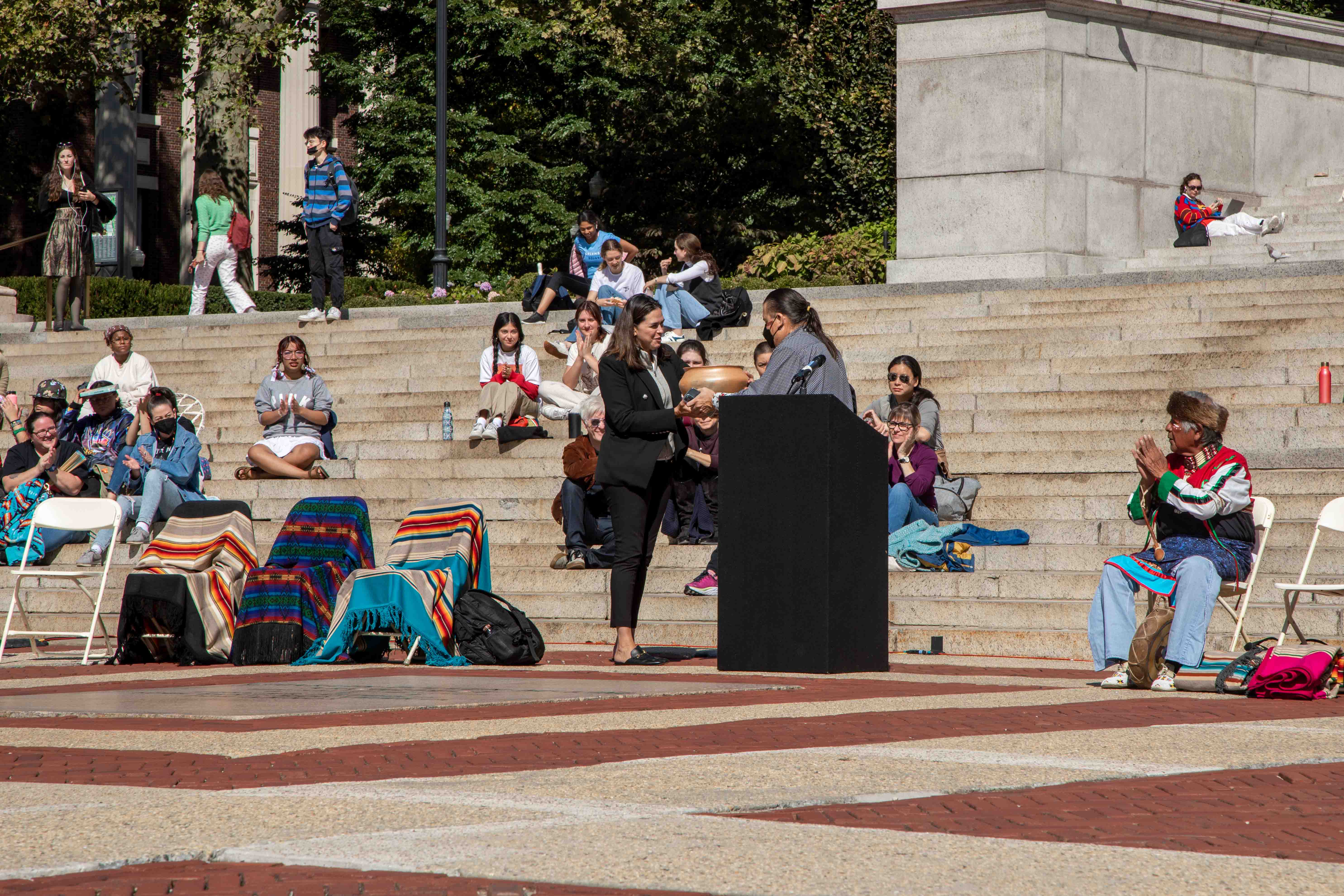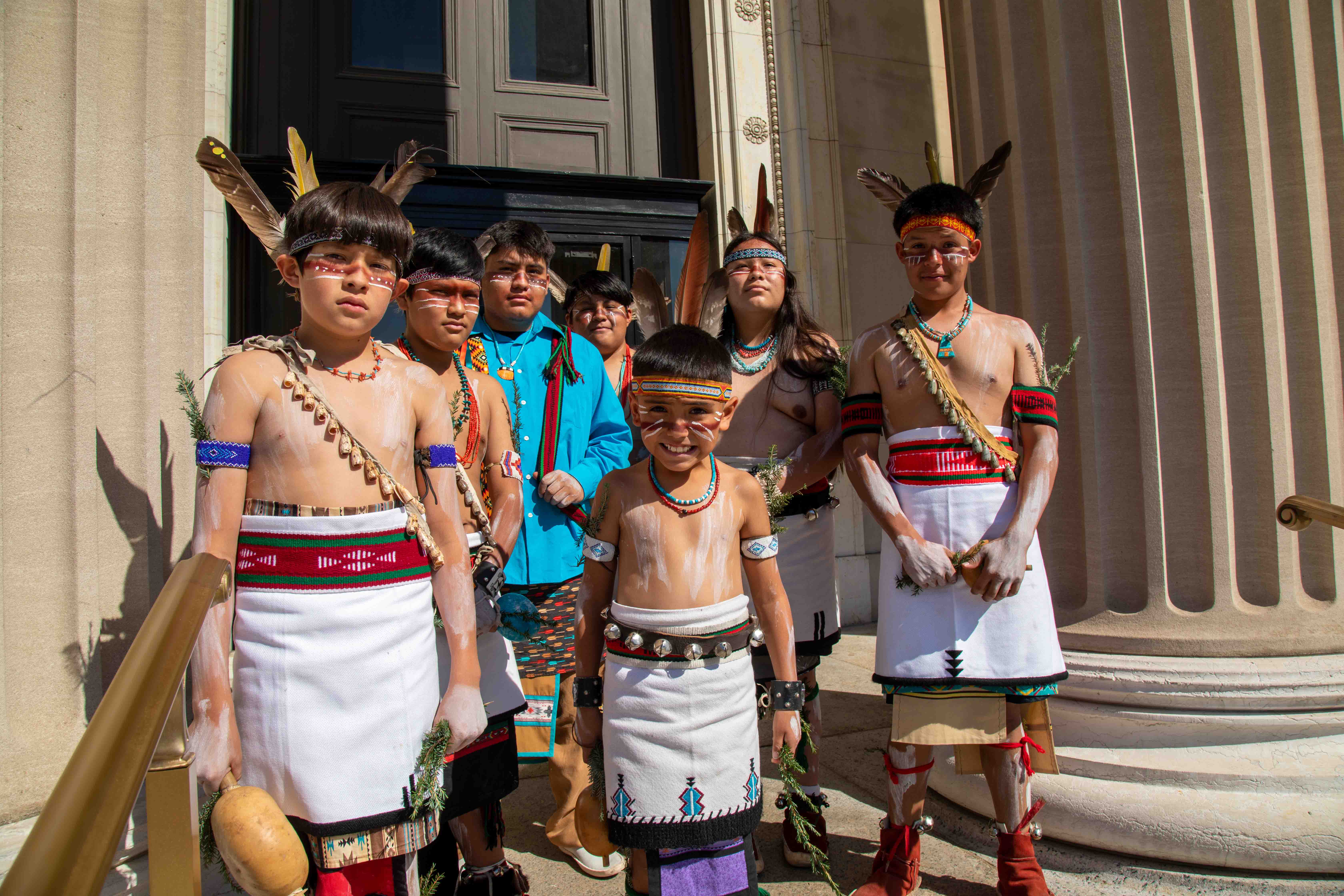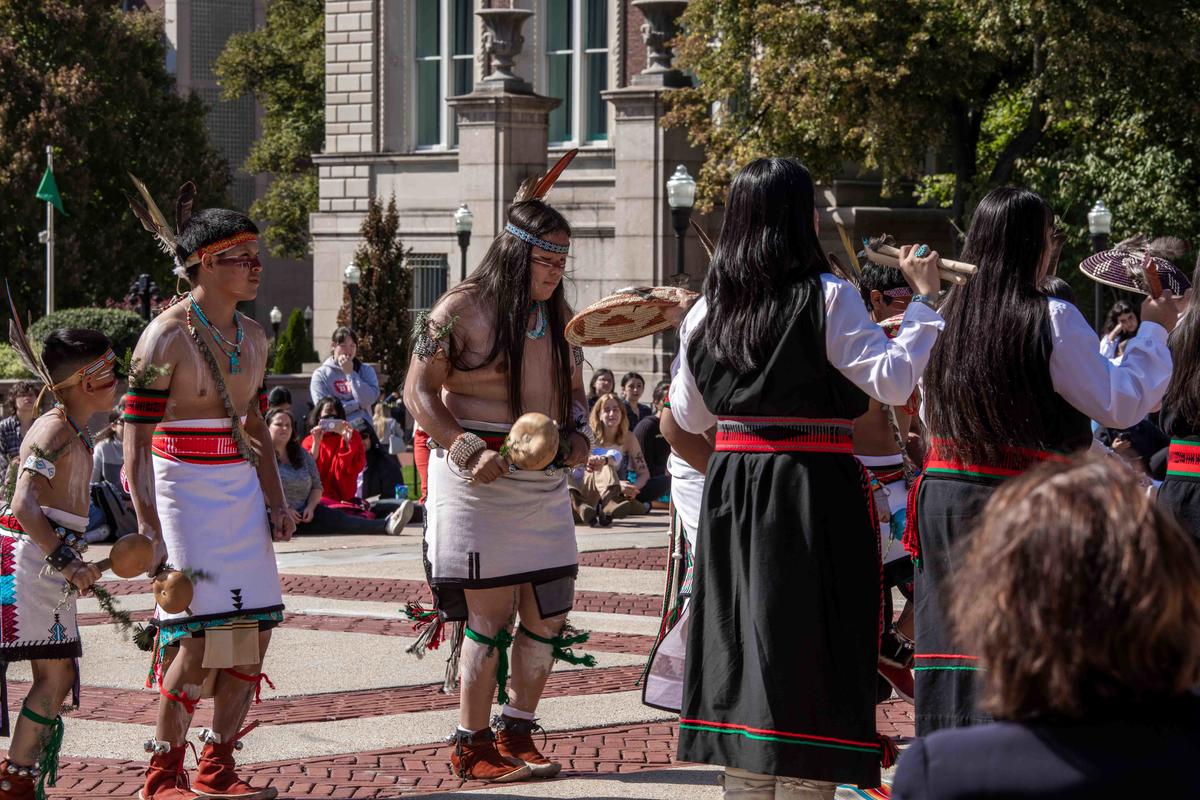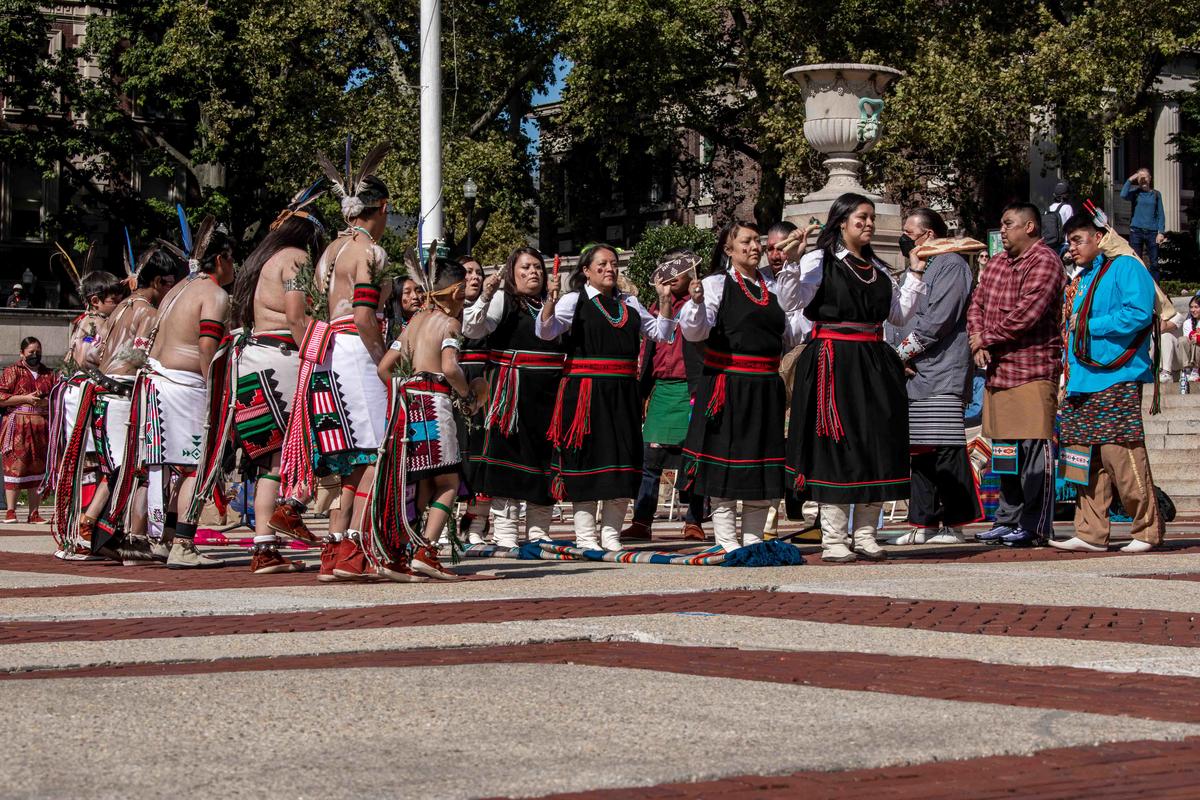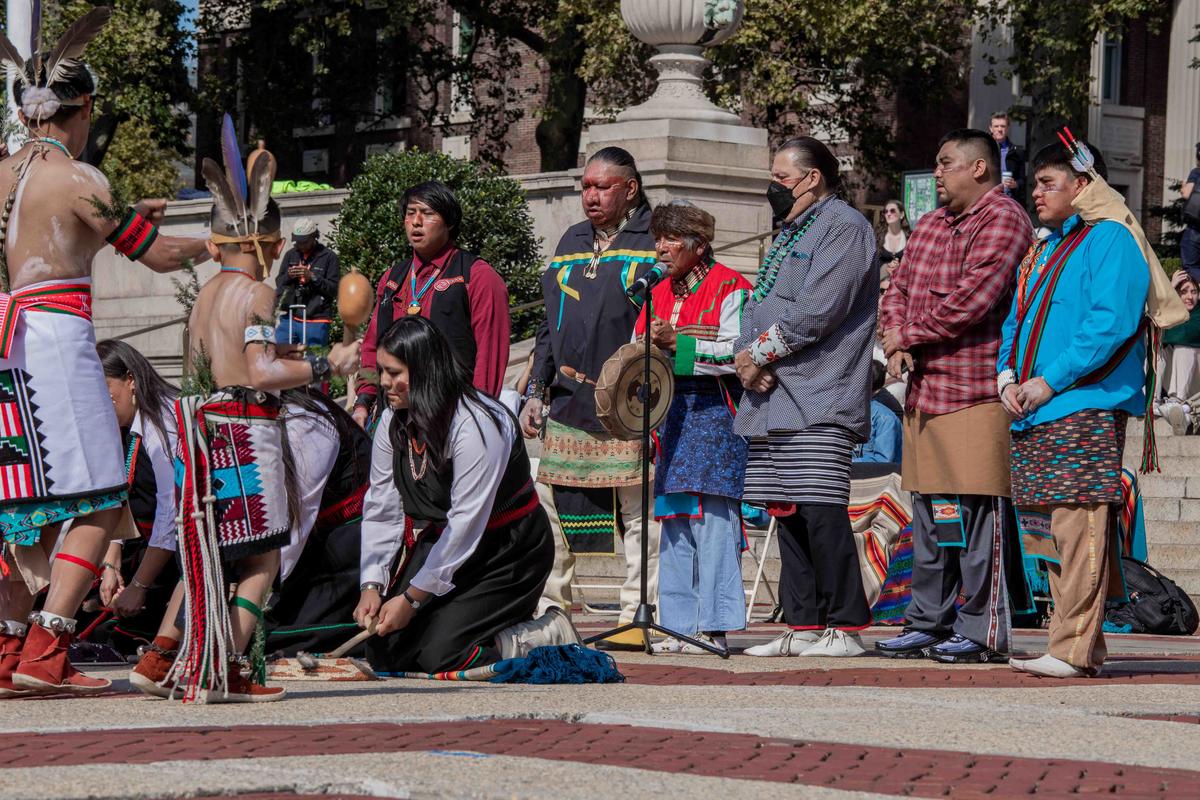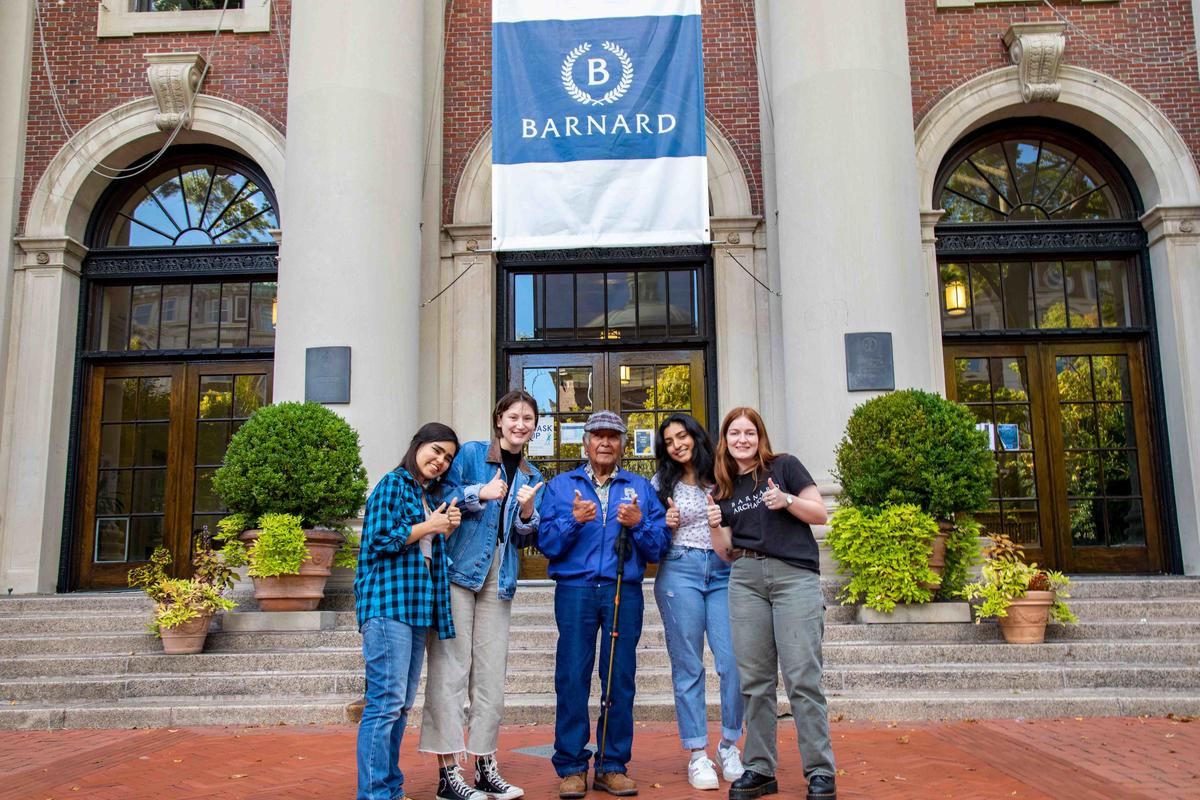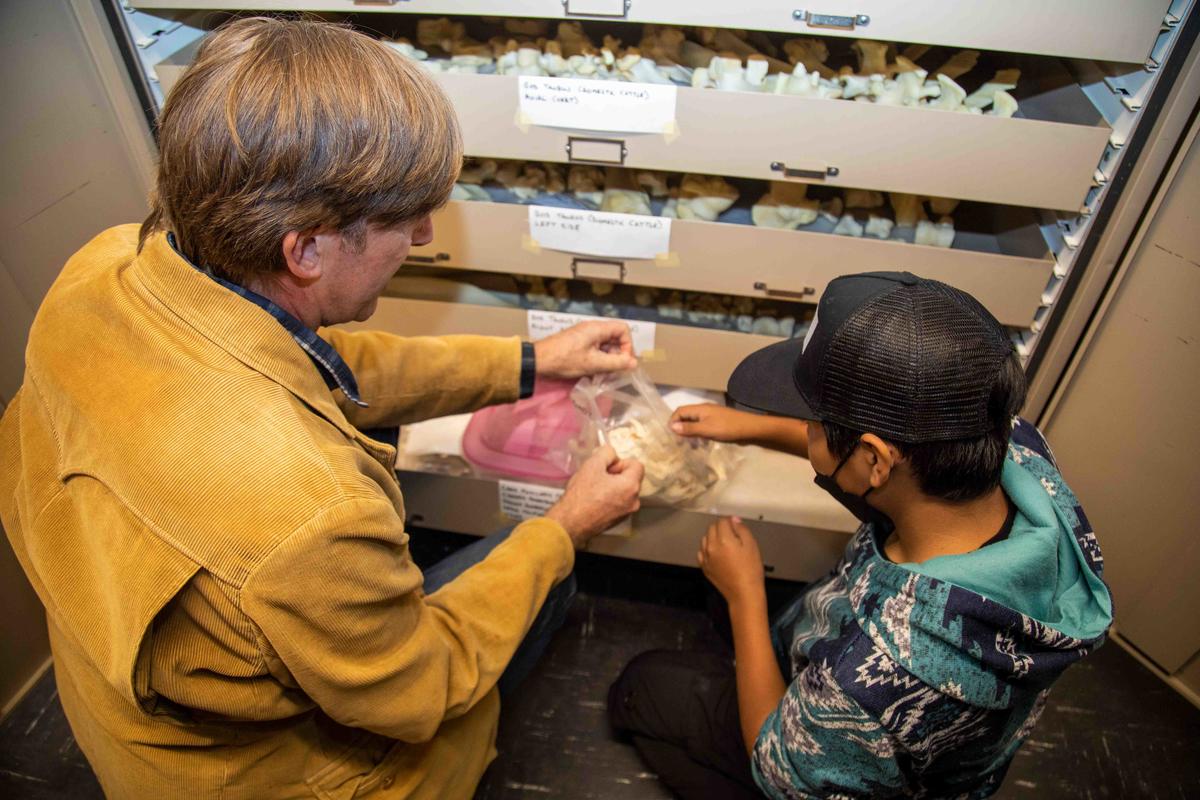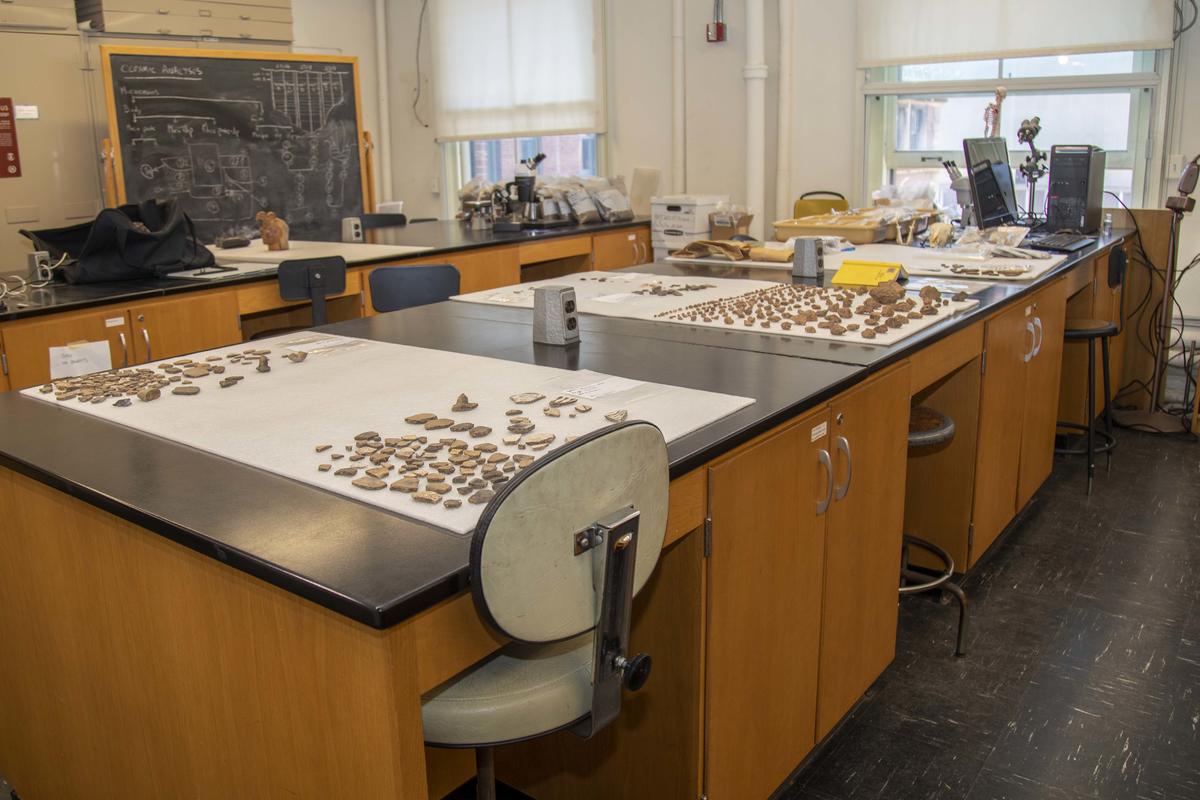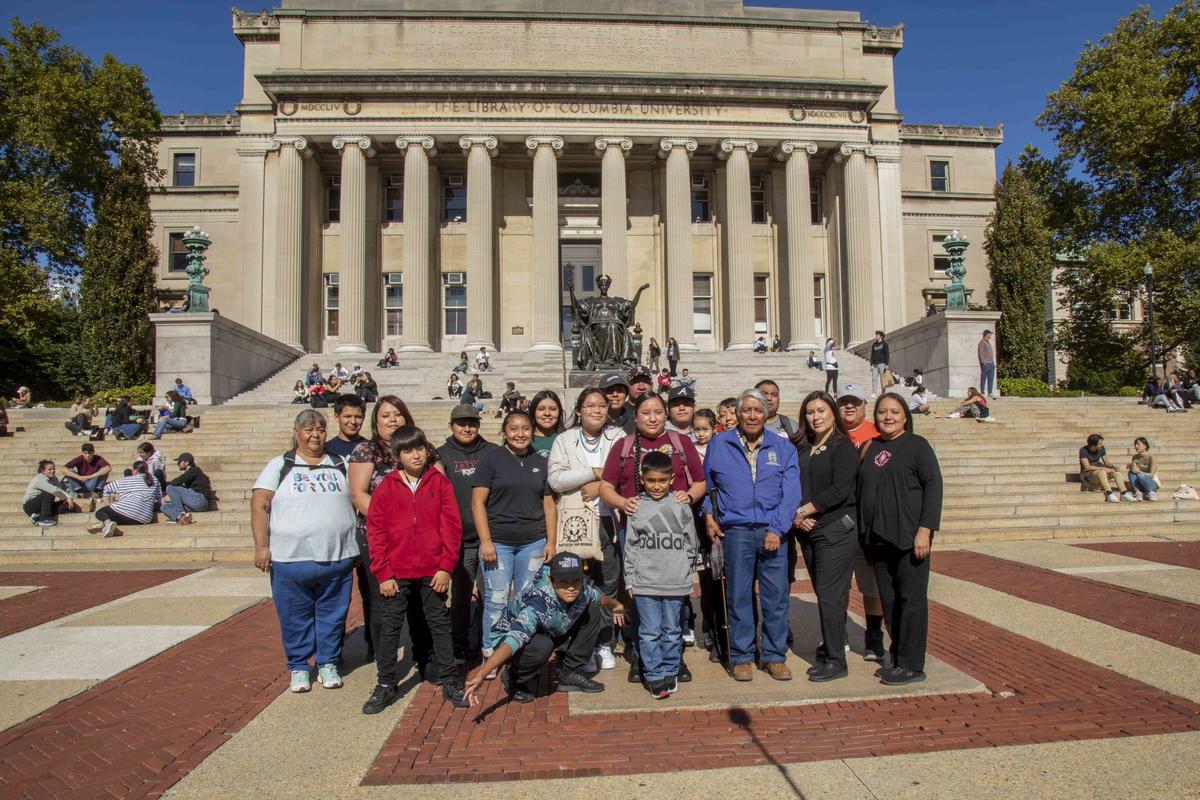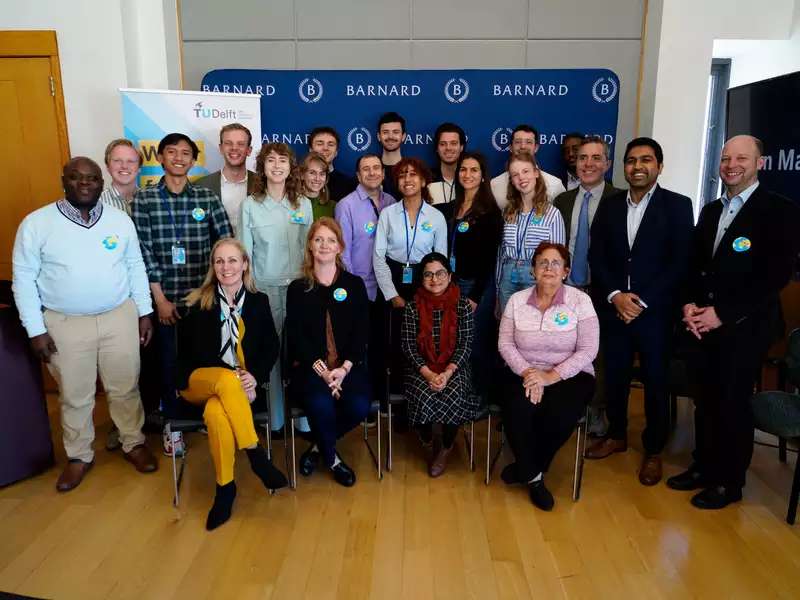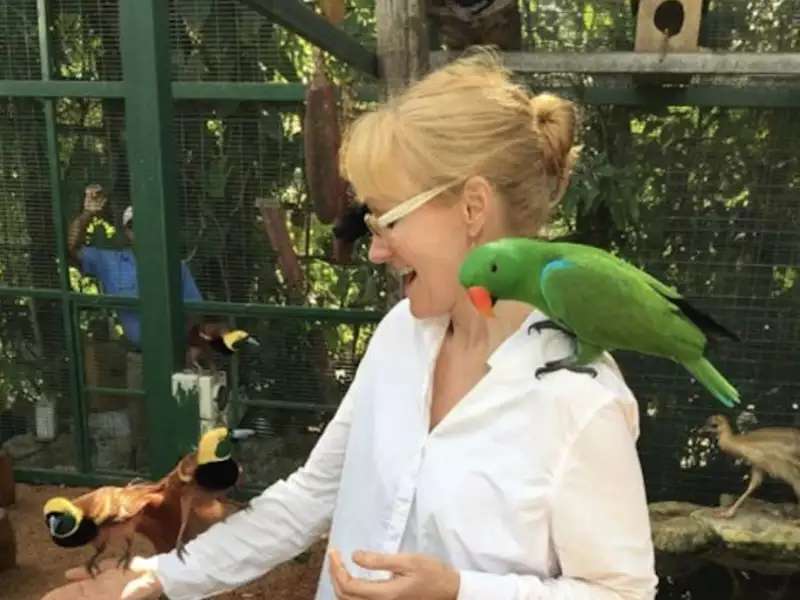Situated on the ancestral homelands of the Lenape people, Barnard College reasserted its support for Native American heritage and culture when it hosted a delegation of 22 members of the Picuris Pueblo Nation from October 7 to 13, including a special dance performed by the tribe on Indigenous Peoples Day (October 10).
The visit was made possible as a result of the collaborative research relationship that Severin Fowles — chair of American studies and associate professor of anthropology — has been building with the tribe since 2018, when he was invited to bring Barnard students to Picuris to help document ancestral archaeological sites on behalf of the tribe.
“When Europeans invaded in the 16th century, Picuris was among the largest Pueblo communities in the region we now call the American Southwest,” said Fowles. “They played a key role in the Pueblo Revolt of 1680 — the most successful Indigenous act of resistance to settler colonialism in American history. It’s largely because of this tradition of resistance that Picuris is a small tribe now. And that remains a point of pride.”
The campus visit of Picuris leaders and members of the tribal Youth Council came courtesy of generous grants from the offices of Barnard’s president and provost as well as fundraising by the Picuris Youth Council. The visit included a tour of Picuris heritage objects at the American Museum of Natural History (AMNH), which houses the Spinden Collection, acquired in 1910.
“We have no written history,” said Richard Mermejo, the Picuris archaeological liaison and former governor of the tribe. “[But] in collaboration with Barnard and Columbia, and the field students who come [to Picuris] to map and categorize information, we have the opportunity to study objects, see where they were obtained, resourced, and how they were made. My goal is to get the information that we can document and put it in our own tribal archives. I’m not doing this for myself, I’m doing this for Picuris.”
A Day to Celebrate
The event on October 10, co-organized by Barnard, the Native American Council (NAC) of Columbia University, and the Indigenous Peoples’ Initiative, featured a recognition ceremony, a basket dance performed by Picuris tribal members, and speeches delivered by members of the Barnard/Columbia community — including President Sian Leah Beilock and Provost Linda A. Bell.
NAC co-presidents, Kianna Pete and Hannah Jimenez, began the recognition ceremony and introduced Indigenous leaders with ancestral roots in the New York region: Curtis Zunigha, the former chief of the Delaware (Lenape) Tribe of Indians and current co-founder and co-director of NYC’s Lenape Center, and Grand Chief Kahsennenhawe Sky-Deer, the first LGBTQ+ grand chief of the Kahnawake Mohawk community.
President Beilock thanked Picuris Pueblo for their partnership with the College. “A place like a university or college is where we grapple with difficult and hard conversations, with a painful history that precedes us and contemporary struggles around tribal sovereignty and land protection,” President Beilock remarked. “At Barnard, we [now] have the Native American and Indigenous studies curriculum. We’re committed to our Indigenous students and to building stronger relations with Native Americans here and everywhere else that Barnard College has an institutional presence."
The recognition ceremony was followed by a public celebration on Columbia’s Low Plaza, during which the Picuris governor, Craig Quanchello, gifted President Beilock with a micaceous clay bowl. “I wanted to give you a piece of home for having a partnership with the Pueblo,” he said. “Hopefully, this [partnership] will last a long time.”
“Many of our dances revolve around rain, around the idea of circular[ity], where things grow, children grow, and people grow,” explained Cecilia Shields, director of the Tribal Interpretive Center. “The [Basket] dance is about bringing health, life, and honoring baskets because that’s where we harvest.” (See dancers in traditional regalia descending the steps to Low Plaza, below.)
During a panel discussion on Indigenous archaeology, Picuris tribal members discussed the collaborative research that Fowles directs, alongside colleagues Michael Adler of Southern Methodist University and Lindsay Montgomery ’08, a Barnard alumna and associate professor at the University of Toronto. Barnard students shared their research findings from the 2022 Archaeology Field Program at Picuris Pueblo before inviting the tribe’s reflections on the history, challenges, and opportunities of archaeological research in their community.
The day ended with a celebratory banquet, in which Barnard students prepared and served home-cooked meals to the delegation members. “In the Pueblo world, community is a big deal. Cooking for one’s guests is a big deal,” said Fowles. “It was lovely to be able to, in our own way, take part in this important tradition. Picuris has been a generous host and mentor to our research team in New Mexico. We have much to thank them for.”
Barnard Explores the Field
The events were a testament to the collaborative bonds between archaeologists and Picuris Pueblo. Fowles, Montgomery, and Adler worked with tribal leaders to guide Barnard students through landscape surveys and excavations that add to the oral history of Picuris. The data collected is intended to support the tribe’s struggle to reclaim lost land and water.
Students worked alongside Jordan Fragua, governor of the Picuris Youth Council, who interned as a member of the project. He joined Mermejo in providing culturally situated guidance on how to study Picuris heritage.
“I think it’s important that we have a mutual understanding with each other,” said Fragua. “There were always horror stories about [what archaeologists have done], which is why a lot of Pueblos are closed off to the idea of it. In the past, archaeologists would take things and never bring them back.” The new generation of archaeologists is doing things differently.
“Seeing Barnard students, who were super respectful, come out to Picuris was different from what I heard about archaeology because they were honest and upfront,” Fragua continued. “[The Youth Council and I] would take part in the activities, and although we don’t have an Indigenous archaeologist in the field, it was really great that someone was doing this work.”
American studies major Sreya Nandanampati ’25, who participated in the archaeology field program this summer, said, “I’ve met incredible people from the Pueblos who have taught me about Indigenous resistance and building solidarity. Goals of the fieldwork included creating maps of [Picuris] agricultural systems, doing rock art surveys, finding artifacts, and tallying the various types of pottery/tools we found. This project is for Picuris to have material that they can use in their future history books and, hopefully, in their legal defenses for their land and water rights.”
Access, Origins, and Digital Repatriation
In addition to their field research with students, Fowles and his colleagues support the tribe in its effort to regain control of ancestral objects and the stories that get told about them. Many of these objects are in museums like AMNH, far from the Picuris community.
“Digital repatriation offers a new way for collaborative efforts to return artifacts to their communities in the form of digital representations, such as 3D scanned displays, alongside their embodied knowledge, even if they are not physically present,” explained Jenny Ni ’18, event coordinator of the Picuris Youth Council 3D scanning workshop on October 8, on Columbia’s campus. “It offers new ways to think about increas[ing] accessibility and reconnect[ing] descendant communities with their ancestral objects."
While the tribe works with ANMH to digitally repatriate the Spinden Collection — which includes pottery, flutes, war clubs, and other ceremonially significant pieces that the nation wishes to reclaim — the workshop’s scanning technology offered them access to rich digital replicas of Picuris artifacts, thanks to Hewlett-Packard scanners supplied to IMATS as part of a grant for a 3D scanning pilot program.
“During the summer [program], I was often in the field with the archaeologists — finding a lot of these objects,” said Fragua of the workshop’s artifact collection. “I remember looking at these pieces in the field, in Picuris, so looking at them here through all of this [scanning technology] is pretty cool, too!”
Expanding Indigenous Studies
Newly created this fall, and directed by assistant professor of American studies Manu Karuka, the Native American and Indigenous studies (NAIS) minor/concentration will build on the local connection that Barnard has to Indigenous communities.
“NAIS addresses New York City as an Indigenous space, home to the largest urban population of Native Americans and Indigenous people in the U.S., and a major location for Native American and Indigenous histories in the arts, politics, and activism,” said Karuka. It is housed within the Consortium for Critical Interdisciplinary Studies (CCIS), which leads academic initiatives around race and ethnicity at Barnard.
Provost Bell celebrated NAIS, adding that Karuka’s teaching was making particularly crucial contributions to Indigenous feminisms and the intersection of Black, Indigenous, and Asian American studies. “For the first time, our students will be able to formally enroll in a curriculum that is specifically organized around Indigenous issues,” said Provost Bell.

